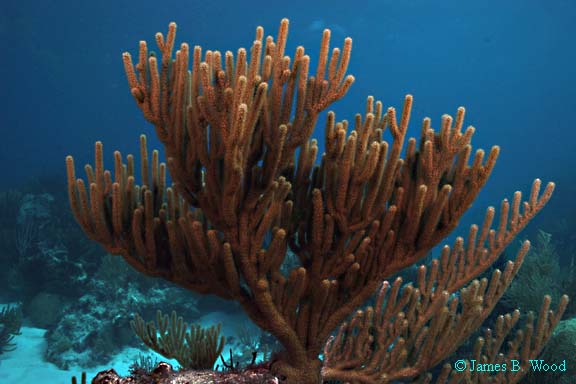Porous
Sea Rod
(Pseudoplexaura porosa)
(Pseudoplexaura porosa)
By Melissa
Parr
Dr. James B. Wood and Kim Zeeh - Editors
Dr. James B. Wood and Kim Zeeh - Editors
|
Porous
Sea Rod
(Pseudoplexaura porosa) By Melissa
Parr
Dr. James B. Wood and Kim Zeeh - Editors |
